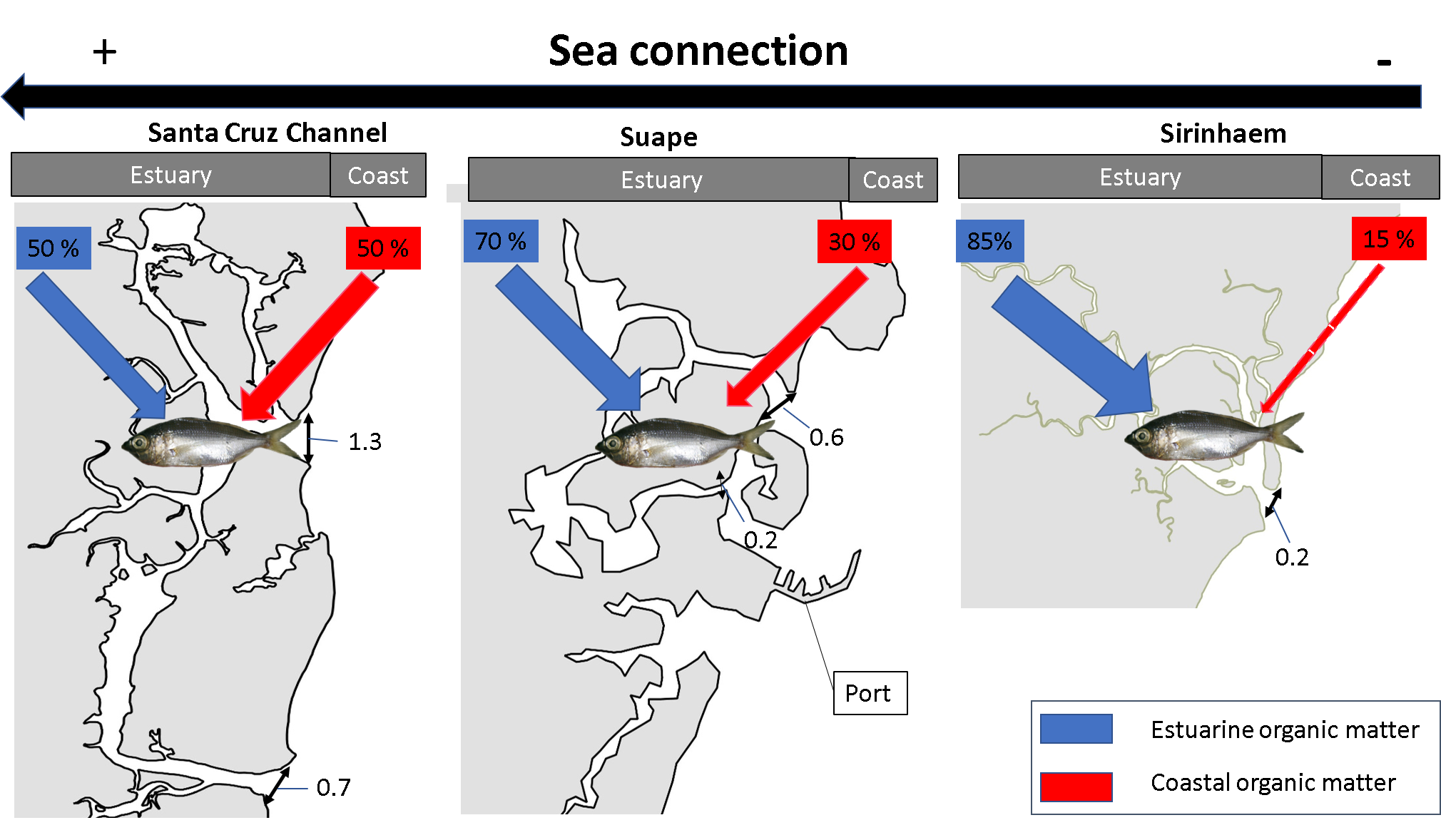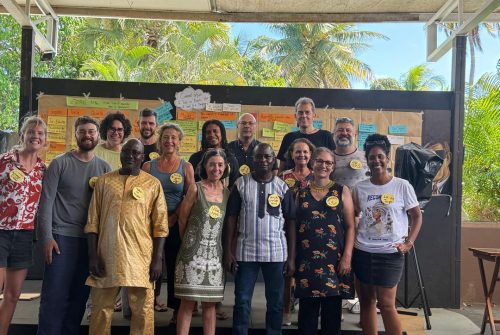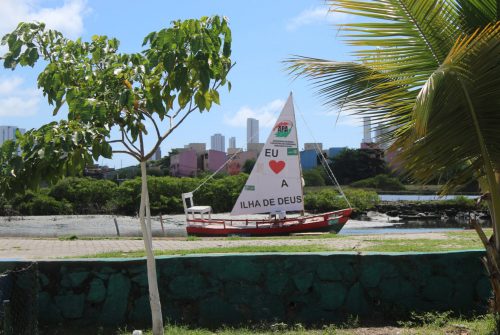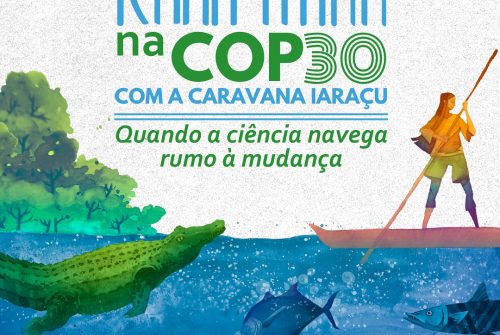
Coastal habitats are interlinked by ecological connectivity, defined as the exchange of organic matter or organisms between habitats. The degree of this connectivity will depend in particular on the geometric properties of the landscape. The increasing anthropogenic alterations in estuaries therefore raises the need to understand how their morphological characteristics influence fluxes between habitats. We used stable isotopes to investigate the variability of ecological connectivity between three estuaries and their adjacent coastal areas by tracking the origin of the organic matter (estuarine vs coastal) underlying the diet of the migrant species Eucinostomus argenteus. The chosen estuaries were geomorphologically distinct, exhibiting, in particular, differences in their degree of connection to the sea, corresponding to the morphological features (shape, mouth width) controlling key physico-chemical variables in this habitat (e.g. salinity). The sampling of the basal food sources contributing to the food web was performed in the three estuaries and in their adjacent coasts. The variability in stable isotope ratios between estuaries was examined for both fish and sources of organic matter. In the three estuaries, Bayesian models were applied for each season (dry and rainy) to quantify the relative contribution of sources from estuarine and coastal environments supporting the diet of the silver mojarra. The share of coastal organic matter increased with the degree of sea connection, indicating that the properties of the seascape can regulate the intensity of interactions between ecosystems. Variations in ecological connectivity are likely to affect the functioning of ecosystems as they influence trophic pathways and energy flows between adjacent habitats. Morphological modifications could thus significantly disturb ecosystems by altering the structure of food web, thereby affecting certain ecosystem services such as the availability of living marine resources.
doi.org/10.1016/j.ecss.2021.107184
Reference
Latifa Pelage, Júlio Guazzelli Gonzalez, François Le Loc’h, Valdimere Ferreira, Jean-Marie Munaron, Flávia Lucena-Frédou, Thierry Frédou, Importance of estuary morphology for ecological connectivity with their adjacent coast: A case study in Brazilian tropical estuaries, Estuarine, Coastal and Shelf Science, Volume 251, 2021, 107184, ISSN 0272-7714.






